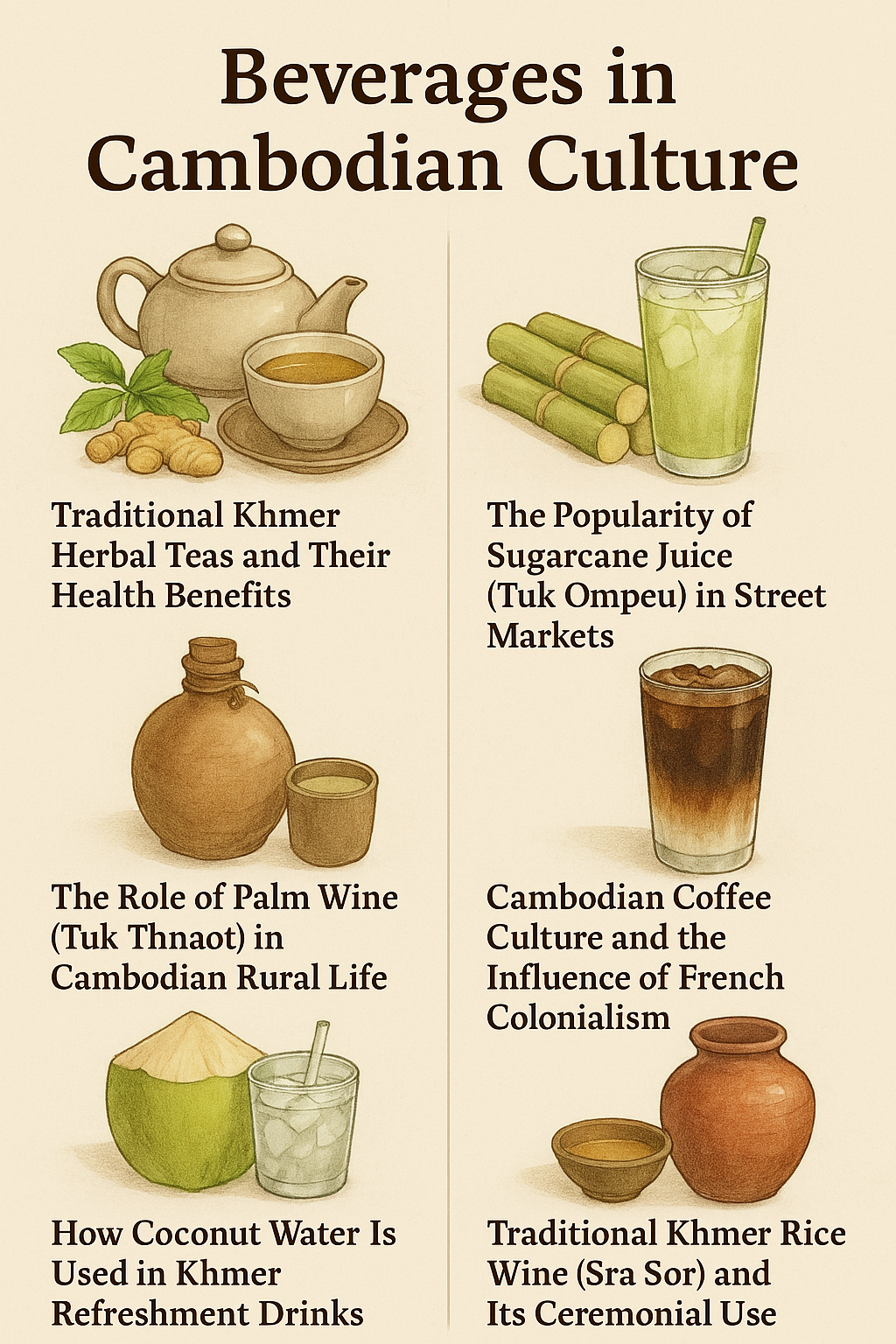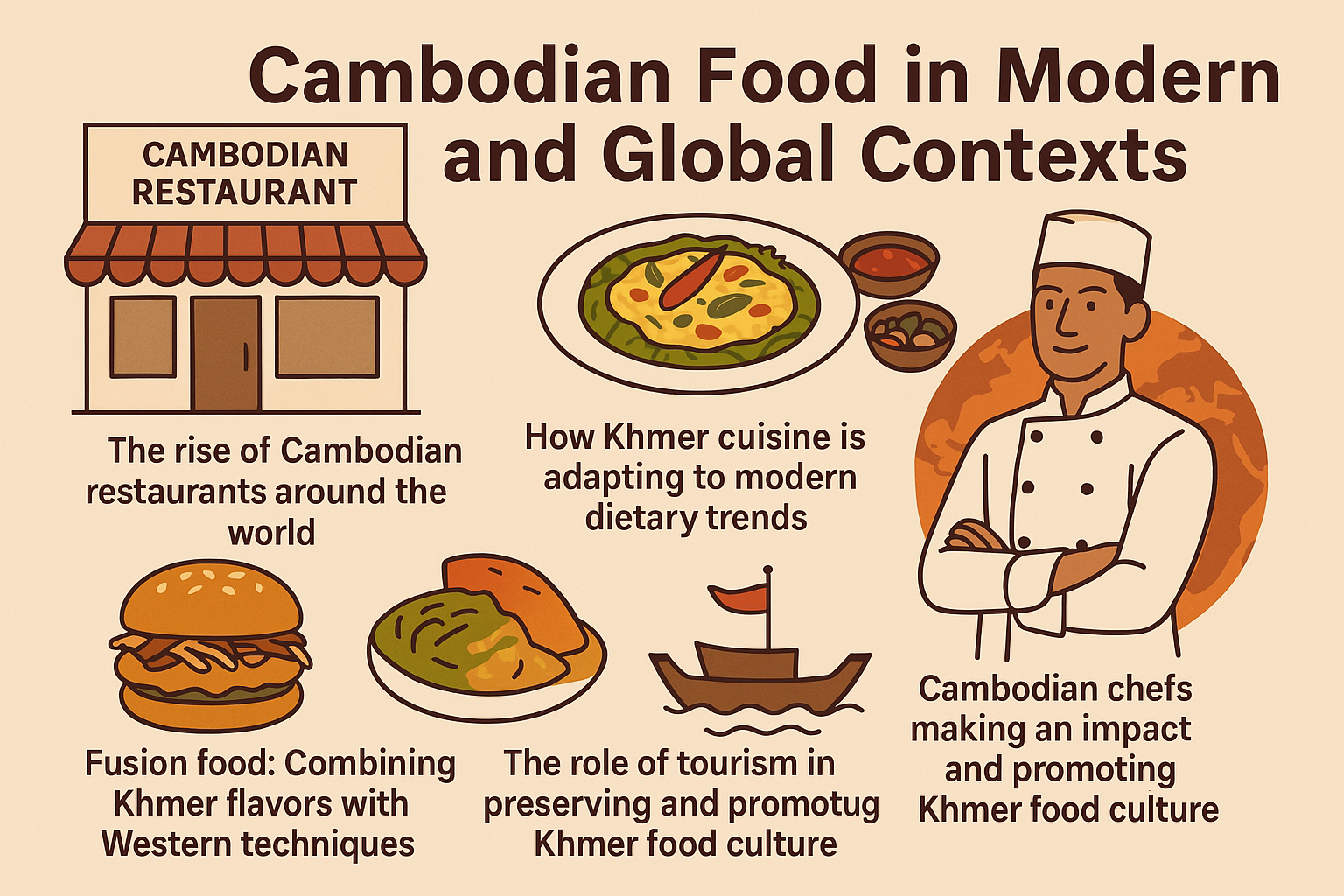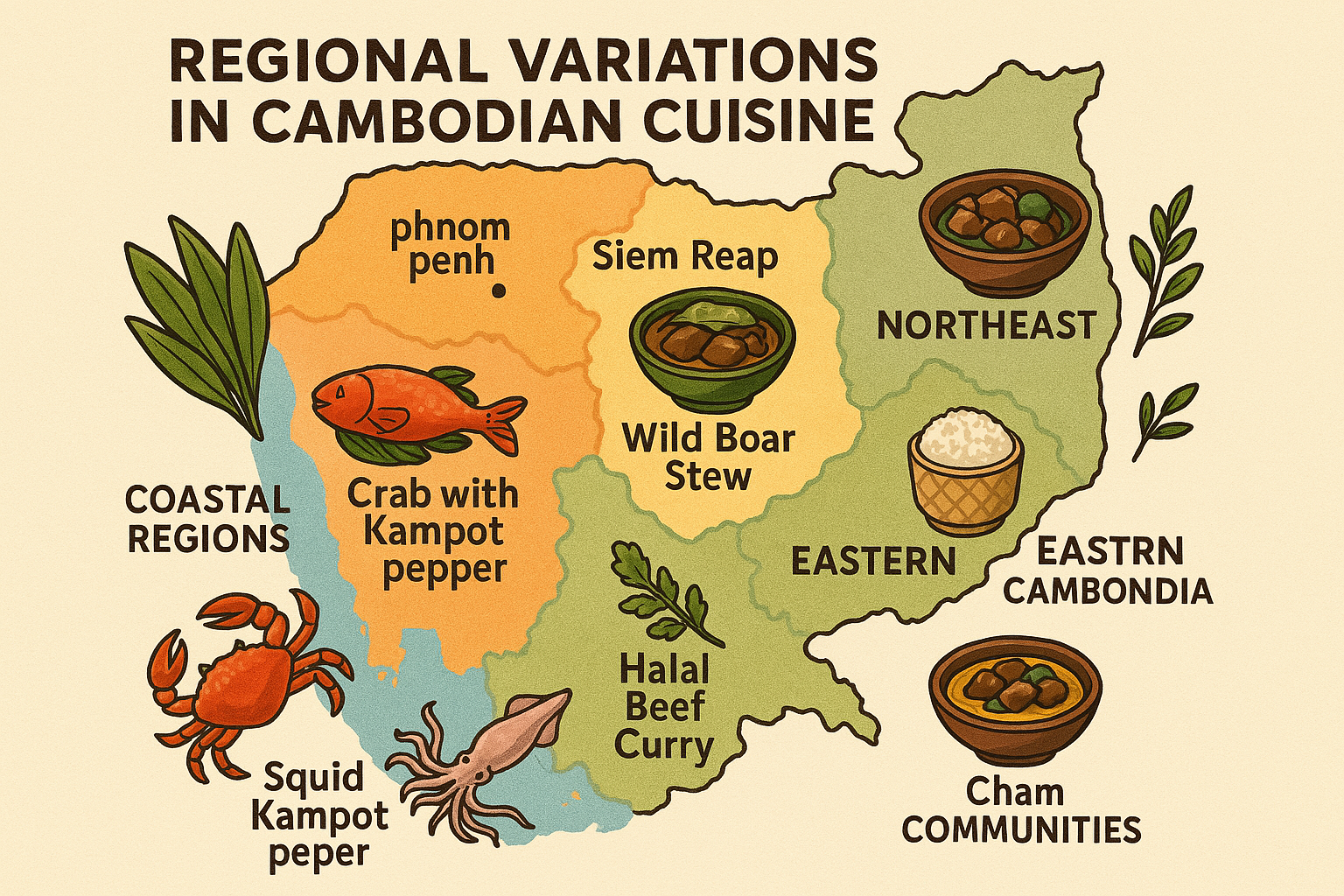Cambodian culture is steeped in tradition—from its cuisine to its customs—and beverages are no exception. Khmer drinks not only quench thirst but also serve ceremonial, medicinal, and cultural purposes. From ancient herbal infusions to street-side sugarcane presses, each drink tells a story of the people, land, and lifestyle of Cambodia. This article explores six key beverages that define Cambodia’s rich and diverse drinking culture.

1. Traditional Khmer Herbal Teas and Their Health Benefits
Herbal teas, known locally as Tuk Khnot Chae, are central to Khmer traditional medicine. Made from ingredients like lemongrass, pandan leaves, ginger, turmeric, and bai sachan (limon grass), these infusions are brewed not only for taste but for their healing properties.
- Lemongrass tea aids digestion and reduces inflammation.
- Ginger and turmeric blends are popular for colds, immune support, and joint health.
- Bai Phka Sreng (jasmine flower tea) is a natural relaxant used to reduce anxiety and promote sleep.
Traditionally served warm, these teas are still found at street stalls and village markets, where they are boiled over wood fires and poured from kettles into small, enamel mugs.
🖼 Suggested Graphic:
An illustrated top-down layout of a wooden Khmer table featuring a clay teapot, bundles of fresh herbs (lemongrass, turmeric root, ginger), and small cups beside a glowing charcoal stove.
2. Tuk Ompeu: Sugarcane Juice in the Streets of Cambodia
Tuk Ompeu (sugarcane juice) is arguably the king of Khmer street beverages. Vendors press fresh stalks of sugarcane through hand-cranked machines, extracting a light green, frothy liquid often chilled with ice and garnished with a hint of lime.
Found in nearly every market and roadside stall, this energizing drink is especially popular during the dry season. Rich in natural sugars and electrolytes, it’s Cambodia’s answer to an energy drink—refreshing, affordable, and nostalgic.
🖼 Suggested Graphic:
An illustrated street cart with a vintage manual sugarcane press, overflowing sugarcane stalks, and glasses of Tuk Ompeu over crushed ice, surrounded by curious schoolchildren and market-goers.
3. Tuk Thnaot: The Role of Palm Wine in Rural Life
Palm wine, or Tuk Thnaot, is tapped from the sugar palm tree (Borassus flabellifer) and naturally ferments into a mildly alcoholic drink. In Cambodia’s countryside, the daily collection of palm sap is both an economic activity and a social tradition.
Fermented overnight in bamboo containers, the drink is consumed fresh—often by farmers relaxing after fieldwork or during village gatherings. It’s also used in rituals, such as preah pithi sampeah kru (teacher offering ceremonies), and is associated with fertility and nature spirits.
🖼 Suggested Graphic:
A farmer scaling a palm tree using a bamboo ladder with containers hanging for sap collection; nearby, villagers sit on woven mats enjoying a shared jar of palm wine with palm fruits and cups.
4. Cambodian Coffee Culture and the Legacy of French Colonialism
Introduced during French colonial rule, coffee became a daily ritual in urban Cambodian life. Today, Khmer coffee stalls serve kafe tuk doh koh (iced black coffee) and kafe tuk doh koh s’kor t’not (coffee with sweetened palm sugar and condensed milk), often using robusta beans roasted with butter or sugar for a caramelized flavor.
In cities like Phnom Penh and Siem Reap, a vibrant café scene blends French-style coffee with local flair. Plastic bags with straws dangling from handlebars are as iconic as polished cafés with croissants and Khmer desserts.
🖼 Suggested Graphic:
A cozy Phnom Penh streetside café with a charcoal coffee pot setup, glass mugs of iced coffee, baguettes, and condensed milk cans—an old-meets-new visual fusion.
5. Coconut Water in Khmer Refreshment Culture
Fresh coconut water (Tuk Dong) is a universal cooler in Cambodia. Whether hacked open on the spot at a street stall or served chilled in restaurants, young coconuts are prized for their hydration, sweetness, and cooling effect.
Coconut water is also blended into fruit shakes or paired with sticky rice desserts. During ceremonies and festivals, young coconuts are sometimes used as symbolic offerings, especially during Pchum Ben and other Buddhist rituals.
🖼 Suggested Graphic:
An illustrated beachside stall with a pile of young green coconuts, a cleaver chopping one open, and people sipping with bamboo straws under palm trees with temple flags waving in the background.
6. Sra Sor: Traditional Khmer Rice Wine and Its Ceremonial Role
Sra Sor (white rice wine) is a potent distilled spirit brewed in homes and villages across Cambodia. While commercially bottled versions exist, the heart of Sra Sor lies in traditional methods—fermented in clay jars and distilled using bamboo tubes.
Used in ancestor worship, wedding blessings, and village spirit offerings, Sra Sor is poured to honor guests or sealed into jars for sacred rites. Its role extends beyond the beverage itself—it’s a vessel of connection to ancestors and spirits.
🖼 Suggested Graphic:
A ceremonial altar with a clay jar of Sra Sor surrounded by incense sticks, fruit offerings, and gold-rimmed cups, with a subtle image of an elder pouring wine into a small bowl for a blessing.
Conclusion: A Sip of Cambodian Identity
In Cambodia, beverages aren’t just for refreshment—they’re reflections of heritage, spirituality, and daily life. Whether sipping a warm herbal tea in a quiet village, sharing palm wine under a tree, or grabbing iced coffee in a buzzing market, these drinks link modern Cambodia to its ancestral roots. Every glass tells a story.





